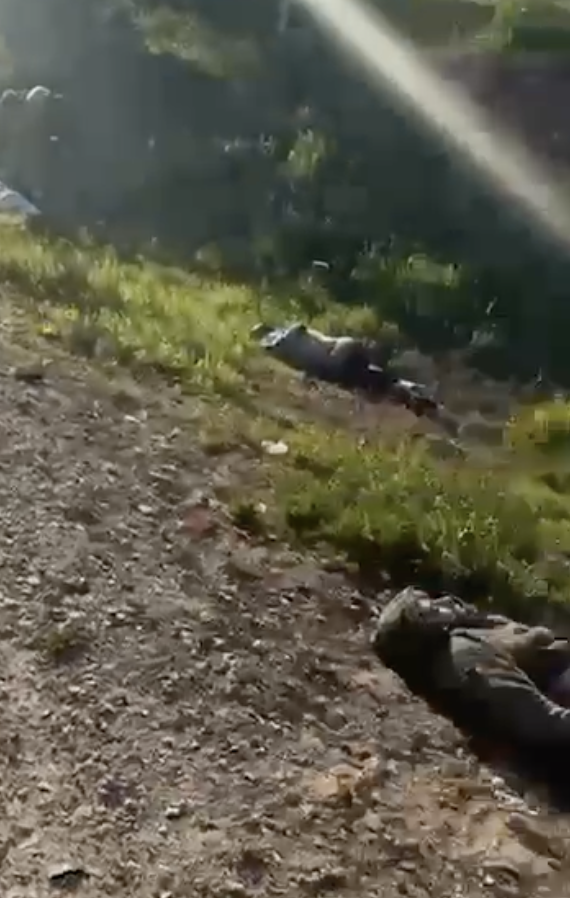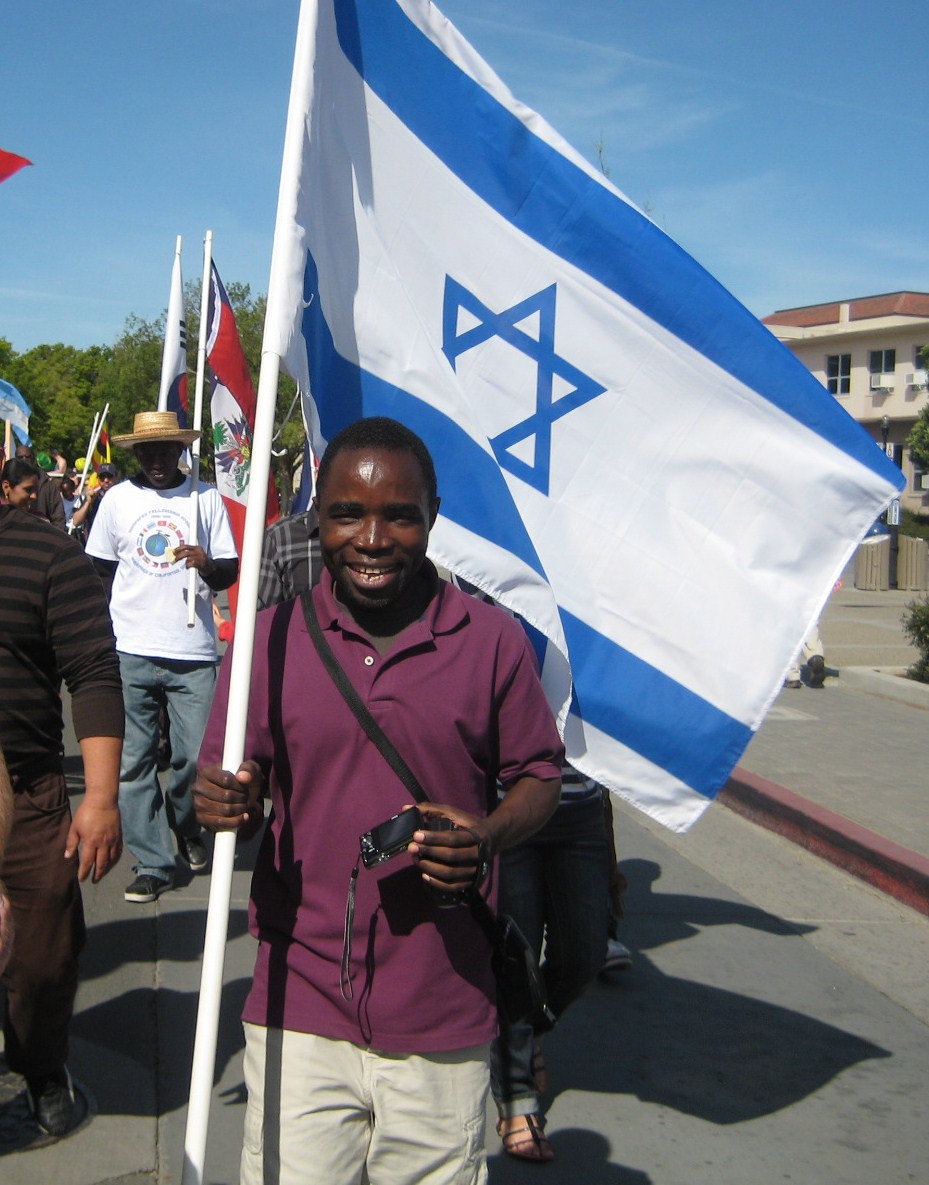Friday
Yom Shishee
30 Shevat 5785
February 28 2025
UPDATE 9:00 AM ISRAEL TIME
The View from Ashdod
Some of the victims lying beside the road immediately after the terror attack yesterday:

Try to wrap your mind around the background of the perpetrator of the terror attack on Highway 65 near the Karkur Junction yesterday.
He was a 53-year-old Palestinan from Jenin who is/was married to an Israeli-Arab woman from Umm Al Fahm. He has/had refused to get an Israeli resident blue card, and so was illegally living in Israel in Ma’ale Irun, but his wife and children are Israeli citzens.
He sped his car into pedestrians wounding 13–two critically. He got out of his car, and back in again trying to drive away but was blocked by police; then he exited the car again with a knife. He was finally shot to death by police.
The phenomenon of Palestinian men marrying Israeli-Arab women, and Israeli-Arab men marrying Palestinian women has become pervasive in Israel. The terrorism resulting from such unions, whether the terrorist be the man or woman who got married–or their children–is a worsening problem here that the government has no idea how to deal with.
On the Hostage Front
From Or Fialkov we have this list of the 59 remaining hostages:
24 Hostages Presumed Alive Or Status Unknown (a government spokesman used the number 21 last week).
🔴 : 17 have provided a confirmed sign of life
1.Evyatar David 🔴
2.Eitan Horn 🔴
3.Eitan Mor 🔴
4.Alon Ohel 🔴
5.Elkana Bohbot 🔴
6.Guy Gilboa Dalal 🔴
7.Gali Berman 🔴
8.David Kunio 🔴
9.Ziv Berman 🔴
10. Yosef Ohana 🔴
11. Matan Angrist 🔴
12. Matan Tzangaoker 🔴
13. Nimrod Cohen 🔴
14. Idan Alexander 🔴
15. Omri Miran 🔴
16. Segev Kalphon 🔴
17. Bar Kuperstein 🔴
18. Avinatan Or
19. Ariel Kunio
20. Maxim Harkin
21. Rom Breslavsky
22. Tamir Nimrod
23. Bipin Joshi (Foreign worker)
24. Netphong Pinta (Foreign worker)
Total: 24 alive (22 Israelis, 2 foreign workers)
Confirmed Killed in Captivity or Bodies Taken:
1. Col. Asaf Hamami
2. Lt. Hadar Goldin (kidnapped in 2014)
3. Sgt. Itay Chen
4. Capt. Daniel Peretz
5. Cpl. Oz Daniel
6. Capt. Omer Nautra
7. Sgt. Maj. Mohammad Al-Atrash
8. Sgt. Ran Gweili
9. Sgt. Shai Levinson
10. Judy Weinstein
11. Inbar Hyman
12. Ofra Kedar
13. Aviv Atzili
14. Sahar Baruch
15. Guy Iluz
16. Tal Chaimi
17. Tamir Ader
18. Aryeh Zalmanovitz
19. Idan Shtivi
20. Yossi Sharabi
21. Gadi Hagi
22. Meni Godard
23. Lior Rodaif
24. Uriel Baruch
25. Dror Or
26. Yair Yaakov
27. Amiram Kuper
28. Yonatan Samrano
29. Ronen Engel
30. Eliyahu Margalit
31. Eitan Levi
32. Ilan Weiss
33. Sontaya Akrasi (foreign worker)
34. Sutthisak Rintlak (foreign worker)
35. Joshua Molal (foreign worker)
*Israeli negotiators are in Cairo today trying to extend Phase 1 of the ceasefire/hostage/Palestinian terrorist prisoner release. Israel wants to continue; Hamas less so.
Elsewhere in the News Today
*An IAF aircraft eliminated a group of Hezbollah terrorists in northern Lebanon. The IAF also eliminated a Hezbollah outpost near Aainata in southern Lebanon.
*The initial findings from the October 7 investigations are what we already knew. IDF commanders were grossly negligent in realizing the threat and communicating with each other after the attack began.
*The mystery deepens. You will recall how for much of Tuesday and Wednesday, central and southern Israel were rocked with massive, thunderous, rumbling explosions. The IDF came out on Wednesday and said that there was nothing to worry about because they were sonic booms caused by IAF training flights. Yesterday, the IDF changed its tune, and said that they were definitely NOT caused by IAF training. So what caused them?
*Congressional testimony has revealed that the Biden Administration funneled nearly $2 billion dollars to Hamas after October 7 via USAID.
*40,000 runners are participating in the Tel Aviv Marathon this morning.
And so it goes in sunny Israel this morning . . . so far . . .


 A student from Malawi, who had worked with an Israeli health volunteer in his country battling AIDS, came up to us as we walked down the street in the UC-Davis Picnic Day Parade and wanted to carry the Israeli flag.
A student from Malawi, who had worked with an Israeli health volunteer in his country battling AIDS, came up to us as we walked down the street in the UC-Davis Picnic Day Parade and wanted to carry the Israeli flag.